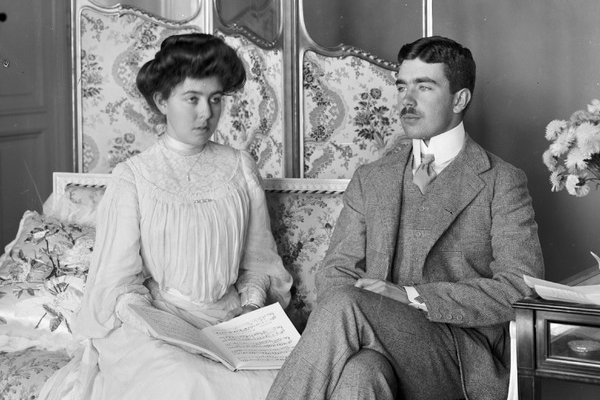
One of the most fascinating royal romances of the 20th century belonged to King Gustaf VI Adolf of Sweden and his first wife, Princess Margaret of Connaught. Today, we’ve got the story of how the two royals fell in love on the Nile, as well as a look at some of the Egyptian-connected jewels they received as wedding presents a few months later.
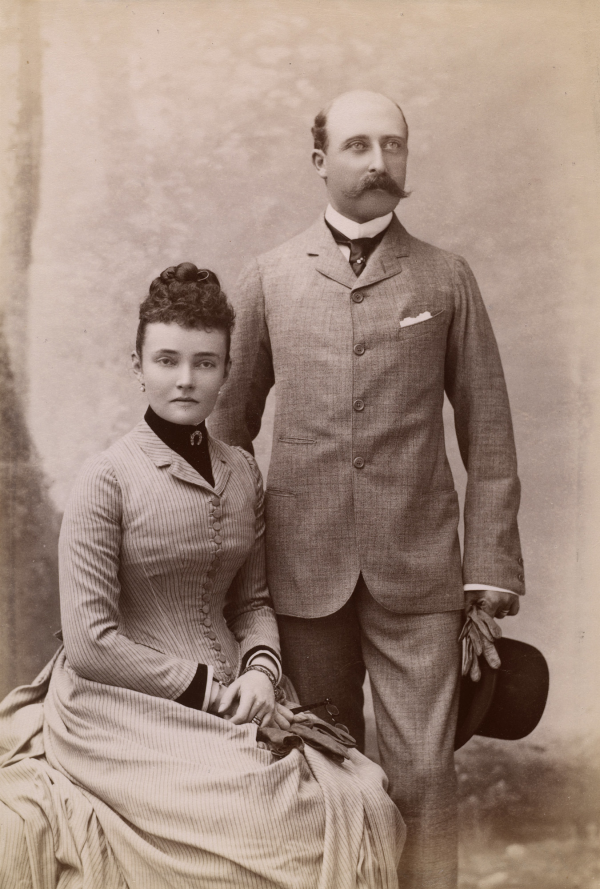
On January 3, 1905, the HMS Essex sailed out of the harbor at Portsmouth, bound for France. On board were some very important royal guests. Prince Arthur, Duke of Connaught, younger brother of King Edward VII, was embarking on a Mediterranean tour. The Duke, who was Inspector General of the armed forces, was on a mission to review British troops at various outposts, especially in Egypt. With him on the naval cruiser were his wife, Princess Louise Margaret, the quiet and reserved Prussian princess he had married in 1879. Also on board were their daughters, 23-year-old Princess Margaret and 18-year-old Princess Patricia.
The military purpose of the Connaught family’s royal tour was well publicized, but that didn’t stop the press from speculating about other reasons for their visit. On the way to the Mediterranean, the Essex made stops in Portugal and Spain. In Lisbon, the Connaughts were greeted by King Carlos and his family, including his two eligible sons. Across the border, Spain was ruled by 18-year-old King Alfonso XIII. The presence of two unmarried British princesses, both of whom were popular and beautiful, set tongues wagging. Betrothals were rumored for both Margaret and Patricia with the Spanish king and the Portuguese prince.
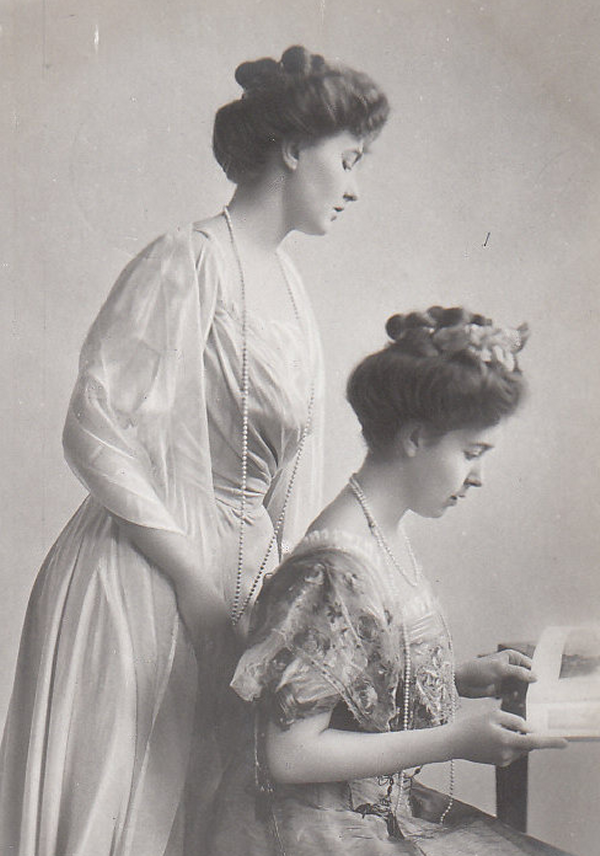
But one British magazine, The Truth, was highly skeptical of the gossip. “The announcement, in some romancing journals, that one of the daughters of the Duke and Duchess of Connaught is to be betrothed to the King of Spain, and the other to the Prince Royal of Portugal, is a nonsensical fiction. The parties with whose names such unwarrantable liberties have been taken have never seen each other. Only a hopeless ignoramus could suppose that there could be any question of marriage between the King of Spain and a Protestant,” they wrote bluntly, adding, “The Prince Royal of Portugal must also marry a born Roman Catholic, and in his case too a wife with a large fortune will be looked for.”
While they were correct about the marriage rumors being unfounded, they weren’t exactly right about the religion of King Alfonso’s future wife. He married a Protestant cousin of the Connaught princesses, Princess Ena of Battenberg, in 1906; she converted to Catholicism for him. As for Prince Luis Felipe of Portugal, he never got the chance to marry at all. He was assassinated in Lisbon in 1908.
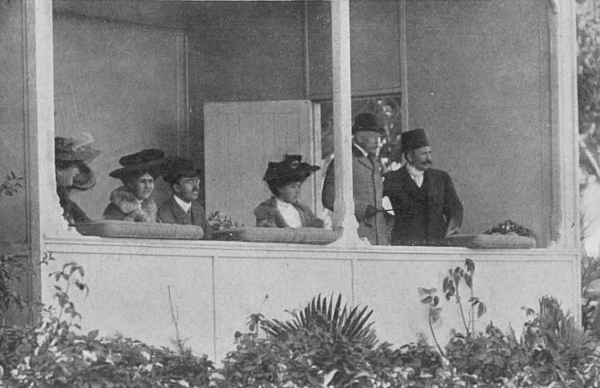
The Connaughts were shown the local sights throughout Portugal and Spain, touring museums and cathedrals and toasting at grand banquets and receptions. They departed from Malaga on January 18 and sailed for Algiers and Tunis. There, more military inspections and banquets awaited them. They sailed into the harbor at Alexandria on January 26 and boarded a special train to Cairo, where they were greeted by Abbas II, the Khedive of Egypt and Sudan, and other local dignitaries to begin the Egyptian leg of their tour. The Khedive ruled the area as a viceroy of the Ottoman Empire. But the British had occupied the country since 1882 (an era often called the “veiled protectorate”), with Lord Cromer as consul-general. He was also present when the royals arrived in Cairo, and the troops that the Duke of Connaught was coming to review in Egypt and Sudan were the British ones occupying the country.
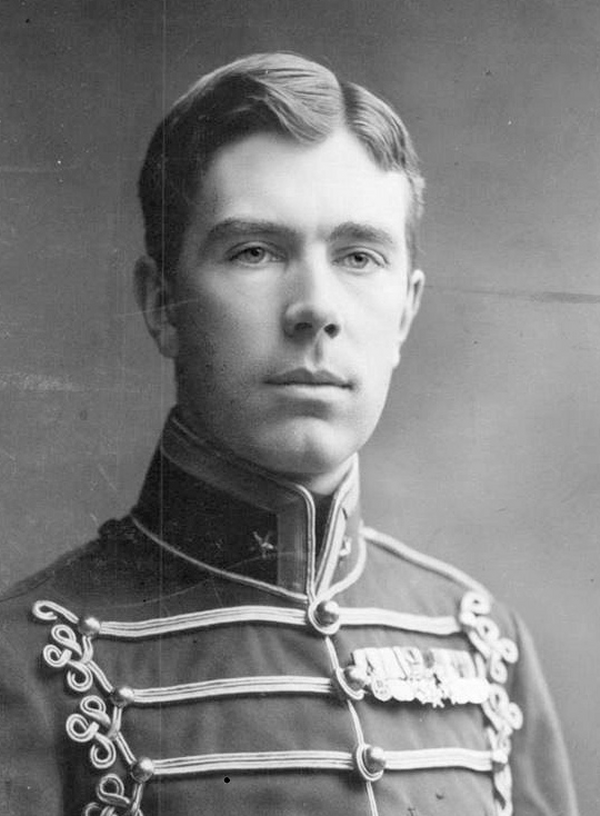
In the winter of 1905, hotels along the Nile were packed with tourists, who had come to take part in a growing social season in Egypt. Other royals and aristocrats were already in the country on holidays and tours when the Connaughts arrived. Among them were the Duke and Duchess of Devonshire, as well as the exiled Empress Eugenie of France, who was cruising the river on a barge. Another was Prince Gustaf Adolf, who was second in line to the throne of Sweden.
The 22-year-old prince was a fascinating young royal. Curious about the world, he was especially fascinated by ancient cultures and archaeology—which made Egypt the perfect place for him to indulge his passions. His visit to northern Africa came on the heels of a tour through the courts of Europe the previous autumn, during which he’d been tasked with finding a suitable wife. But none of the princesses he’d met had interested him, to the point that the press began speculating that he might break with tradition and end up marrying a woman who wasn’t royal at all.
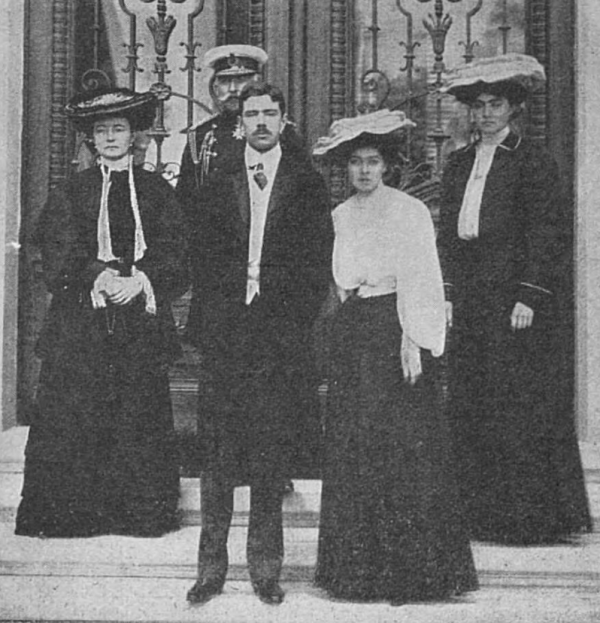
When Princess Margaret of Connaught arrived in Cairo, Prince Gustaf Adolf was there to meet her. Later on, the moment would be remembered as a coup de foudre—an instance of true love at first sight, a sort of happy royal accident organized by fate. The Connaughts were due to leave Cairo almost immediately to travel to Khartoum and Luxor, and Prince Gustaf Adolf reportedly changed his plans so that he could spend more time with the family.
But how much of the meeting had been fate, and how much had been careful planning? The press had reported the previous December that Gustaf Adolf had been planning a trip to England, and a few days before the Egyptian meeting, a correspondent for the Truth wrote, “Several of my contemporaries are feverishly anxious to see Princess Margaret of Connaught married. The Princess has been betrothed by the press during the last few months to numerous Princes, including the King of Spain, the Crown Prince of Portugal, the Duke of Saxe-Coburg-Gotha, and Prince George of Hanover. The latest report on the subject is that a marriage is to be arranged between Princess Margaret and Prince Gustavus Adolphus of Sweden and Norway, eldest son of the Crown Prince,” though they also note that the “couple with whose names such liberties are taken have never yet met,” and the prince was still being linked to other royal princesses.
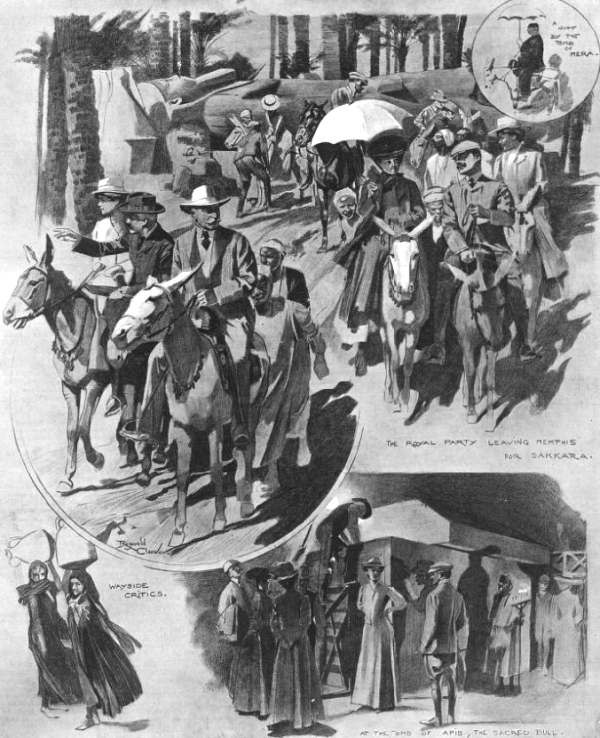
Whether the meeting between them was arranged or not, Gustaf Adolf and Margaret appear to have fallen quickly, but genuinely, in love. The vivacious princess, who was called “pretty, sensible, and kind-hearted” by the Gentlewoman, and the studious prince, who was described in the newspapers as “very frank, open, and unconventional,” balanced each other well.
And their romance blossomed against an incredible backdrop. During their time in Luxor, the royals visited the Valley of the Kings, where they became some of the first people to enter the newly-discovered tomb of a pharaoh’s daughter. They also rode donkeys to Memphis to see the famous statue of Ramesses II and the tombs at Saqqara. While the couple were still touring the ancient sites, the Tatler speculated, “it is not unlikely that Princess Margaret of Connaught will be betrothed to Prince Gustavus Adolphus, eldest son of the Crown Prince of Sweden, whom she met for the first time by arrangement recently at Cairo.”
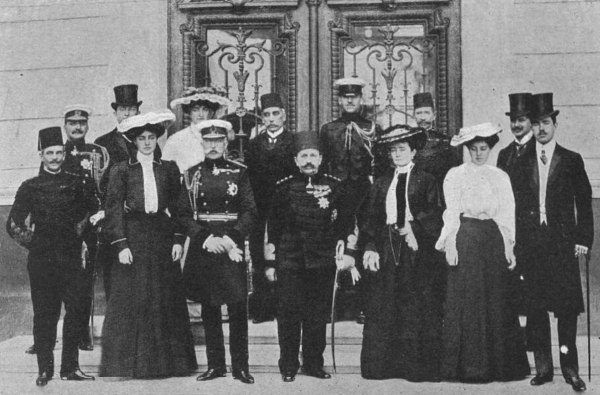
Indeed, by the time the royal party returned to Cairo on February 17, Margaret and Gustaf Adolf were ready to make a public announcement. The Duke of Connaught cabled the news of the couple’s engagement back home to his brother in the United Kingdom. On Saturday, February 25, the King announced the news at a dinner party, and an official announcement was made by Buckingham Palace in the Court Circular: “Their Majesties the King and Queen to-day received the gratifying intelligence of the betrothal of her Royal Highness Princess Margaret Victoria Augusta Charlotte Norah of Connaught, eldest daughter of their Royal Highnesses the Duke and Duchess of Connaught, to his Royal Highness Prince Oscar Frederick William Olaf Gustavus Adolphus, Duke of Schonen, eldest son of their Royal Highnesses the Crown Prince and Crown Princess of Sweden and Norway, and grandson of their Majesties the King and Queen of Sweden and Norway. Their impending marriage has the King’s entire sanction and approval.”
Back in Egypt, the press reported, “Great satisfaction is expressed in Cairo at the engagement of Princess Margaret of Connaught and Prince Gustavus Adolphus of Sweden, who has made himself very popular here during his stay.” On the night of February 27, the prince hosted a ball for his fiancee and her family at the Ghezireh Palace Hotel. Lord and Lady Cromer were among the hundreds of guests in attendance, as was the Khedive’s brother, Prince Mohammed Ali. Prince Gustaf Adolf accompanied the Connaughts when they left Cairo for Alexandria the following day, and on March 2, the Essex left for their return journey to England, with stops along with way in Cyprus and Malta. They continued their “long, bright, and happy period of courtship” as they made their way back home, finally parting in Paris.
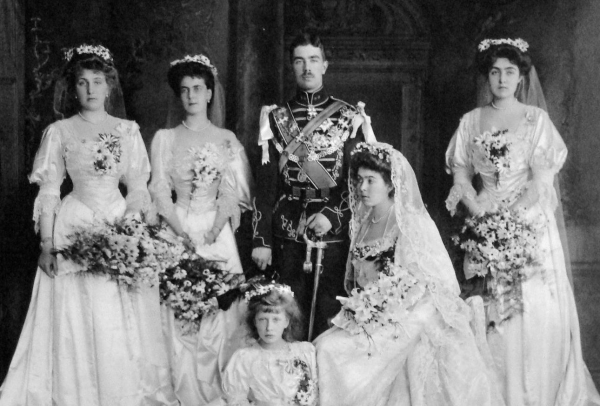
The royal wedding took place on June 15, 1905, at St. George’s Chapel, Windsor. The guest list included several people who were also present on the Nile during the early days of the couple’s romance. The most notable of these was the Khedive of Egypt himself, who made the rare trip to England shortly before the royal wedding. His presence was particularly noted by the press, including the Tatler, who wrote, “In addition to the bridegroom’s relatives from Sweden there will be any number of foreign royalties present, including the Khedive of Egypt, who has already sent a magnificent present and is especially interested in the wedding as it was in Egypt the young people first met, and as a matter of fact it was at a ball in Cairo that Prince Gustav Adolf proposed.” Also included on the list were the Duke and Duchess of Devonshire and Empress Eugenie, who sent her lady-in-waiting as her representative.
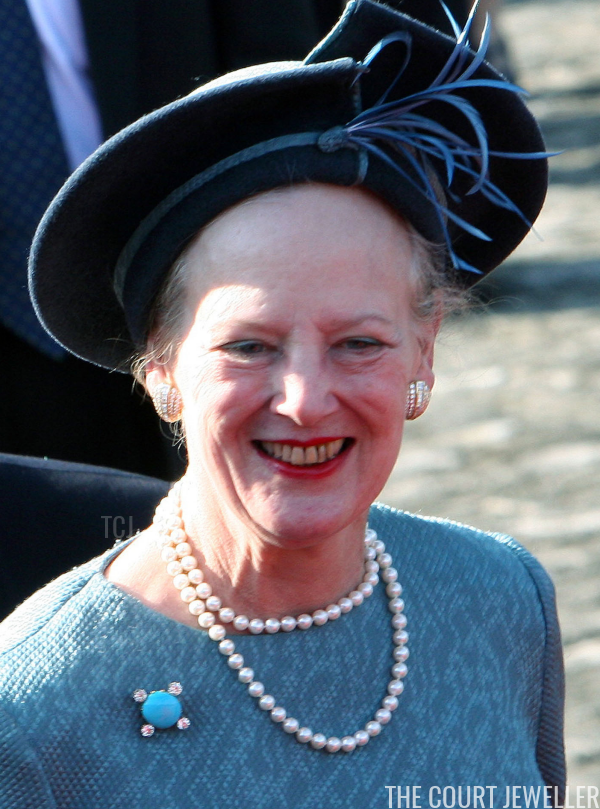
These guests, who witnessed the beginning of the couple’s love story, also offered the bride some spectacular bejeweled presents. Empress Eugenie sent ahead a diamond butterfly ornament and a pair of vases for the couple. The Duke and Duchess of Devonshire offered Margaret a lovely turquoise brooch studded with diamonds. That brooch is currently worn by the couple’s granddaughter, Queen Margrethe II of Denmark.
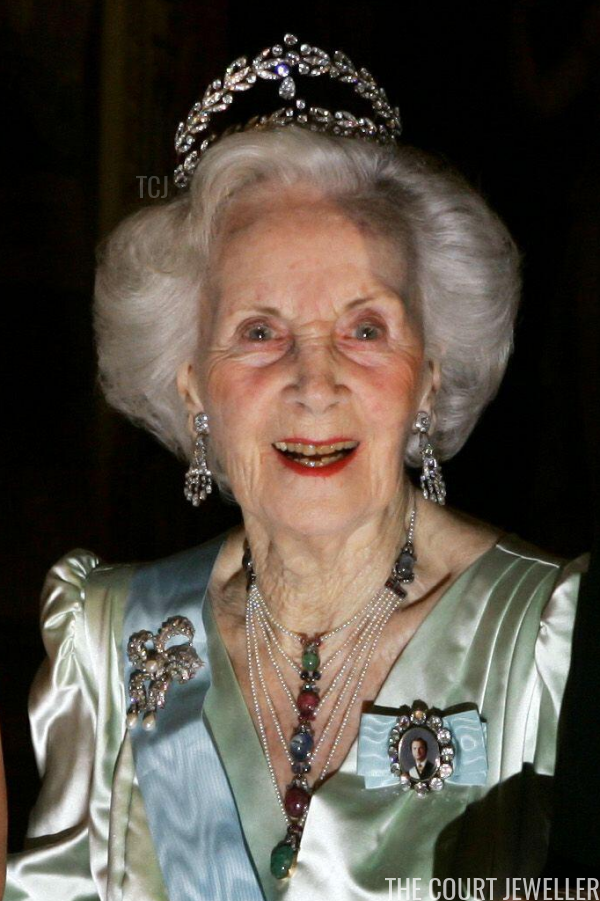
Though they were not in Egypt during their son’s courtship, Crown Prince Gustaf and Crown Princess Victoria of Sweden also gave their new daughter-in-law an Egyptian-inspired wedding present. Their gift was an unusual five-stranded pearl necklace made by Koch. Each strand of pearls features a bejeweled “scarab” at its central point, forming a vertical line of scarab elements against the sternum of the wearer. The necklace was inherited by the couple’s son, Prince Bertil, and worn by his wife, Princess Lilian. It now belongs to Queen Silvia of Sweden.
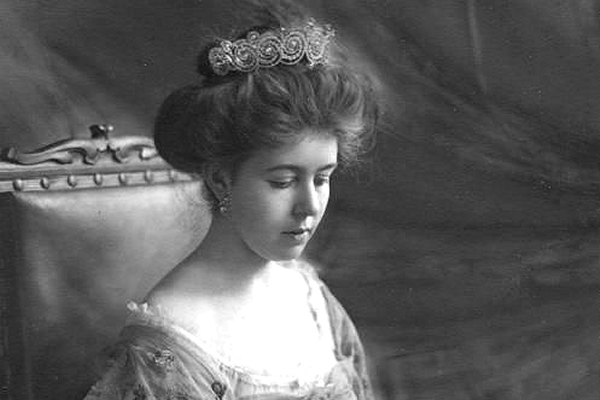
The most magnificent of the gifts, though, was undoubtedly the convertible jewel presented to the couple by the Khedive himself. He offered the princess a beautiful diamond tiara featuring scrolls and marguerites in the design. (Margaret’s nickname in her family was “Daisy,” because “marguerite” is one of the names of the flower in French.) The tiara could also be taken off its frame and worn as a corsage ornament.
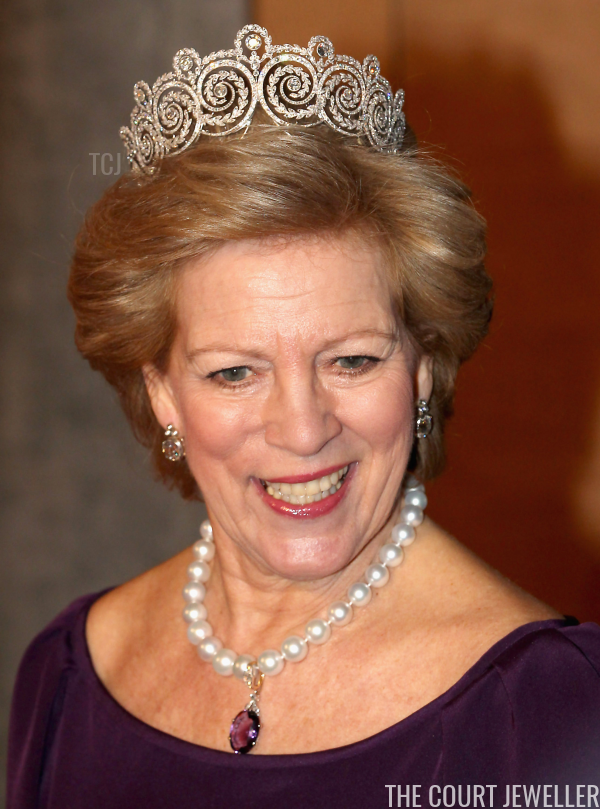
The Khedive of Egypt Tiara became one of the most treasured jewels from Margaret’s collection. It was inherited by her daughter, Queen Ingrid of Denmark, and it has become the official bridal diadem for her female descendants. Today, the tiara is owned by Queen Anne-Marie of Greece, and it’s waiting in the wings to be worn by the next bride in line: her daughter, Princess Theodora of Greece and Denmark.
Leave a Reply
You must be logged in to post a comment.